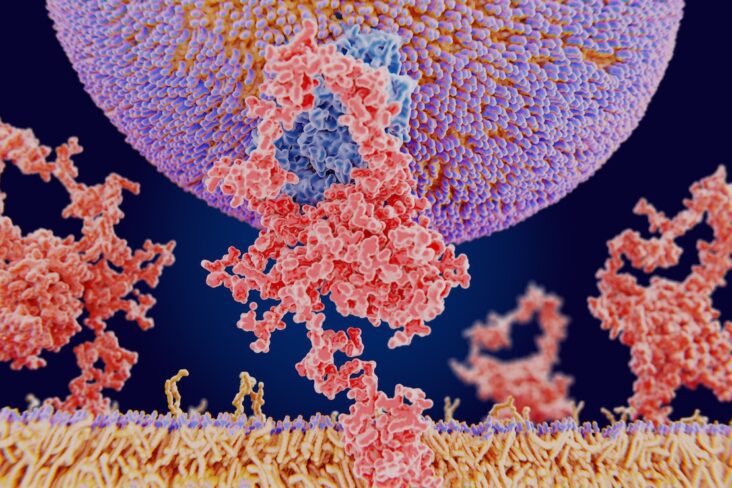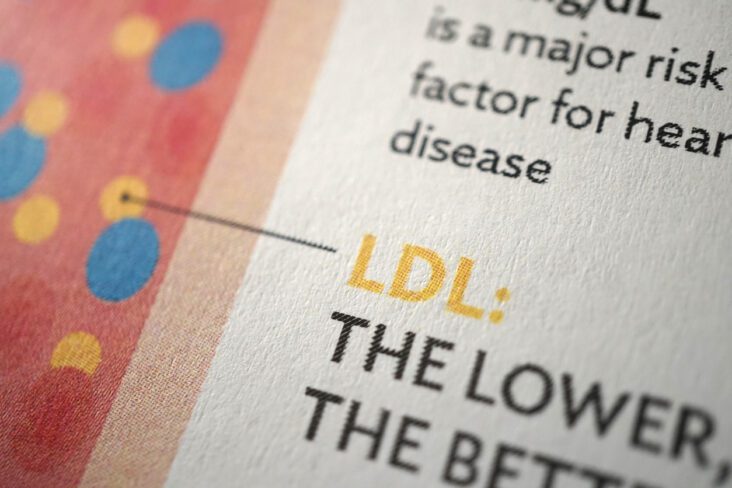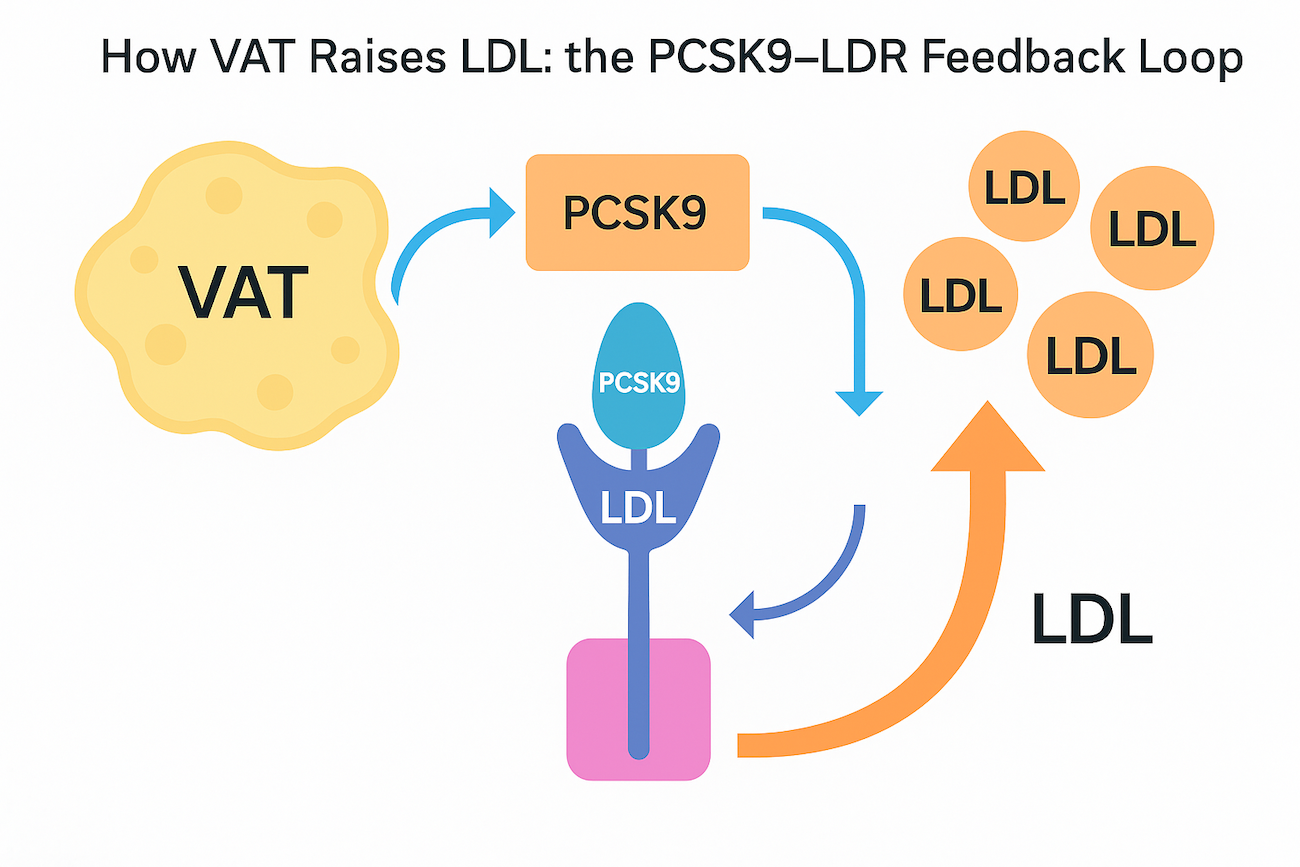
An article written by Dr Edward Leatham, Consultant Cardiologist
For busy people, or to tune in when on the move, Google Notebook AI audio podcast and an explainer slide show are available for this story beneath.
Please note that this is the last in series of Naked Heart, with weekly blogs now moving to metabolic health series. For those interested please signup to its separate newsletter subscription here.
Tags: VAT, Metabolic Health, NH1, search website using Tags to find related stories.
When patients ask how to “burn belly fat,” what they usually mean is how to lose visceral fat — the deep, internal fat that surrounds the liver, pancreas, and heart. This is the fat that drives inflammation, insulin resistance, and cardiovascular risk.
While many people assume that long, steady aerobic exercise like walking or cycling is the best route to fat loss, evidence increasingly shows that high-intensity interval training (HIIT) — short bursts of near-maximal effort — is one of the most effective ways to reduce visceral adipose tissue (VAT).
Let’s explore why.
1. HIIT Targets the Metabolic Core of the Problem
Visceral fat is not just stored energy — it is a metabolically active organ that releases inflammatory cytokines (IL-6, TNF-α) and free fatty acids directly into the portal circulation. This overloads the liver, impairs insulin sensitivity, and drives a self-reinforcing cycle of fat accumulation.
HIIT interrupts this cycle by dramatically improving insulin sensitivity and glucose uptake in skeletal muscle — particularly in the large lower-limb muscles of the thighs and glutes. A single 20-minute session of HIIT can activate GLUT-4 transporters in muscle cells for up to 24–48 hours, drawing glucose out of the bloodstream and away from storage in the liver and visceral fat depots.
2. The Anaerobic Advantage — Training Without Oxygen
Unlike steady-state aerobic exercise, HIIT operates primarily in the anaerobic zone. During intense effort, oxygen supply can’t keep up with muscle demand, forcing the body to rely on stored glycogen and the phosphocreatine (PCr) system for energy.
This temporary oxygen debt triggers powerful metabolic adaptations:
- Post-exercise oxygen consumption (EPOC): After HIIT, the body consumes extra oxygen for hours to restore energy stores and repair muscle tissue — continuing to burn fat even at rest.
- Hormonal activation: HIIT stimulates adrenaline, growth hormone, and noradrenaline — all potent fat-mobilising hormones that specifically increase lipolysis in visceral fat.
- Mitochondrial biogenesis: Repeated anaerobic stress signals muscles to build new mitochondria, improving the body’s long-term fat-oxidising capacity.
3. Visceral Fat Is More Responsive to Catecholamines
Visceral adipocytes are rich in β-adrenergic receptors, which respond strongly to adrenaline and noradrenaline. These hormones are released during short bursts of intense exercise — precisely what happens in HIIT.
Subcutaneous fat, by contrast, is less responsive. This explains why HIIT preferentially mobilises VAT even when overall body weight changes little. You can “stay the same weight” but still dramatically improve your metabolic profile as visceral fat shrinks and muscle mass increases.
4. HIIT Builds Muscle — and Muscle Is a Fat-Burning Organ
Skeletal muscle is the main site of glucose disposal in the human body. Every gram of additional muscle acts as a metabolic sink for glucose and fatty acids.
HIIT, even in short sessions, preserves and increases lean muscle mass. This is crucial because:
- Muscle raises basal metabolic rate — you burn more energy even while resting.
- Muscle competes with fat for energy supply — reducing the opportunity for visceral fat to expand.
- Muscle improves metabolic flexibility, allowing the body to switch efficiently between glucose and fat as fuel.
In other words, HIIT doesn’t just burn calories during exercise — it changes your physiology so that fat is less likely to return.
5. Short, Sustainable, and Scalable
A major advantage of HIIT is that it can be completed in 10–20 minutes, using nothing more than body weight, resistance bands, or simple movements like squats, push-ups, and sprints.
For busy professionals or older adults, this short-duration, high-reward format improves adherence — and consistency is the ultimate determinant of visceral fat loss.
Even two to three HIIT sessions per week can reduce VAT by up to 20–30% in clinical studies, often outperforming traditional aerobic programs of much longer duration.
6. The Inflammatory Reset
HIIT does more than alter body composition. It resets inflammatory tone. Studies show that reducing visceral fat through HIIT leads to lower high-sensitivity CRP, reduced interleukin-6, and improved endothelial function.
This is why patients often describe feeling “lighter” and “sharper” even before major weight changes appear — the improvement is cellular, not cosmetic.
7. Practical Application — How to Begin Safely
If you’re new to HIIT, start gradually. The goal is intensity, not exhaustion.
A typical starter routine might include:
- 30 seconds of fast effort (e.g. brisk stair climb, cycling sprint, or body-weight squats)
- 90 seconds of active recovery (gentle movement or slow walking)
- Repeat 8–10 times for a total of 15–20 minutes.
Always warm up and cool down. People with known cardiovascular disease or hypertension should discuss new exercise plans with their clinician — HIIT can be safely tailored for all levels, including cardiac rehab, when properly supervised.
8. The Takeaway
HIIT works because it reprogrammes metabolism. It improves insulin sensitivity, activates fat-mobilising hormones, and preferentially burns visceral fat — the type that truly matters for long-term health.
It’s not about chasing calorie counts or spending hours on a treadmill. It’s about stimulating the system — challenging muscle and mitochondria to work harder, recover stronger, and remodel energy use at the cellular level.
In short, HIIT trains your body to burn fat even when you’re not exercising — and visceral fat is the first to go.
Key Takeaways
- Visceral fat is metabolically active and inflammatory.
- HIIT improves insulin sensitivity and glucose uptake in muscle.
- Anaerobic bursts release fat-mobilising catecholamines that preferentially target VAT.
- Muscle gained through HIIT becomes a metabolic buffer against future fat gain.
- 10–20 minutes, two to three times a week, can make a measurable difference.
References
- Maintenance of time-restricted eating and HIIT over 2 years
Design: Randomised/cohort design combining time-restricted eating (TRE) and HIIT interventions.
Findings: After 2 years, participants in HIIT (and TRE + HIIT) had significantly lower body mass, fat mass, and visceral fat area compared to baseline. (Nature) - Effect of eight weeks of HIIT (Iran, PCOS / metabolic population)
Design: 8-week HIIT vs control, in women with PCOS / metabolic syndrome features
Findings: Significant improvements in anthropometric measures (waist circumference, body fat), insulin sensitivity, lipid profile, and inferred visceral fat reduction (via surrogate metrics). (BioMed Central) - “Effect of High-Intensity Interval Training on Visceral and Liver Fat in Cardiac Rehabilitation”
Taylor JL et al. 2020. Obesity (Silver Spring).
Design: Patients with coronary artery disease (CAD) in a 3-month supervised + 11-month home program. They compared HIIT (4×4 min) vs moderate-intensity continuous training (MICT) in their effects on VAT (via MRI) and liver fat.
Findings: Both HIIT and MICT significantly reduced VAT over 3 months (−350 cm³ vs −456 cm³) and maintained further reductions at 12 months (−545 vs −521 cm³). No significant between-group difference in VAT reduction; HIIT tended to yield greater liver fat reduction. (PubMed) - “Effects of various exercise types on visceral adipose tissue in individuals with overweight and obesity: a network meta-analysis”
Chen et al. (2023)
Design: 84 RCTs (n = 4,836) comparing different modalities (moderate aerobic, vigorous aerobic, HIIT, resistance, combinations) on VAT and body composition.
Findings: All exercise modalities (aerobic, resistance, HIIT, combinations) improved VAT, weight, BMI, waist circumference. Among them, vigorous-intensity aerobic and HIIT ranked highest in probability of being most effective at improving VAT. (Wiley Online Library) - “Dose–response effects of exercise and caloric restriction on visceral fat — randomized trial in Chinese women” Design: Randomised controlled trial in overweight Chinese women, testing different HIIT / aerobic protocols and diet intervention arms.Findings: The study demonstrated that a HIIT protocol had a strong effect on abdominal fat reduction (including visceral compartment) beyond caloric restriction alone, supporting a dose–response relation. (British Journal of Sports Medicine)
- “Comparative Efficacy of Exercise Type on Visceral Adipose Tissue” (recent meta-analysis) Design: Systematic review and meta-analysis comparing different exercise types (continuous training, HIIT, resistance, etc.) for effects on visceral fat. Findings: Concludes that continuous training (CT) had the highest ranking (P-score) in effectiveness, but HIIT still performed favorably; the authors caution interpretation depends on protocol, duration, and population. (Wiley Online Library)
Related posts
- Intervention programmes: from self-toolkits to nurse-led escalation to GLP-1 support
- Cardiometabolic toolkit
- Visceral Fat, Mitochondria, and the Energy Trap: Why We Store Fat Where We Shouldn’t
- Carbohydrate Sensitive Phenotype (CSP): Precursor of the Metabolic Syndrome?
- Exercise and Digital Tools Should Be the First Line in Reducing Visceral Fat in Cardiac Patients
- Cardiologists and a New Enemy: Evolving Tools of the Trade
- Carbohydrate Sensitive Phenotype (CSP): Precursor of the Metabolic Syndrome?
- Metabolic Health Assessment
- Biofeedback: CGM metrics improve after just 4 weeks of dietary intervention
- Lets compare continuous glucose monitor (CGM) results




